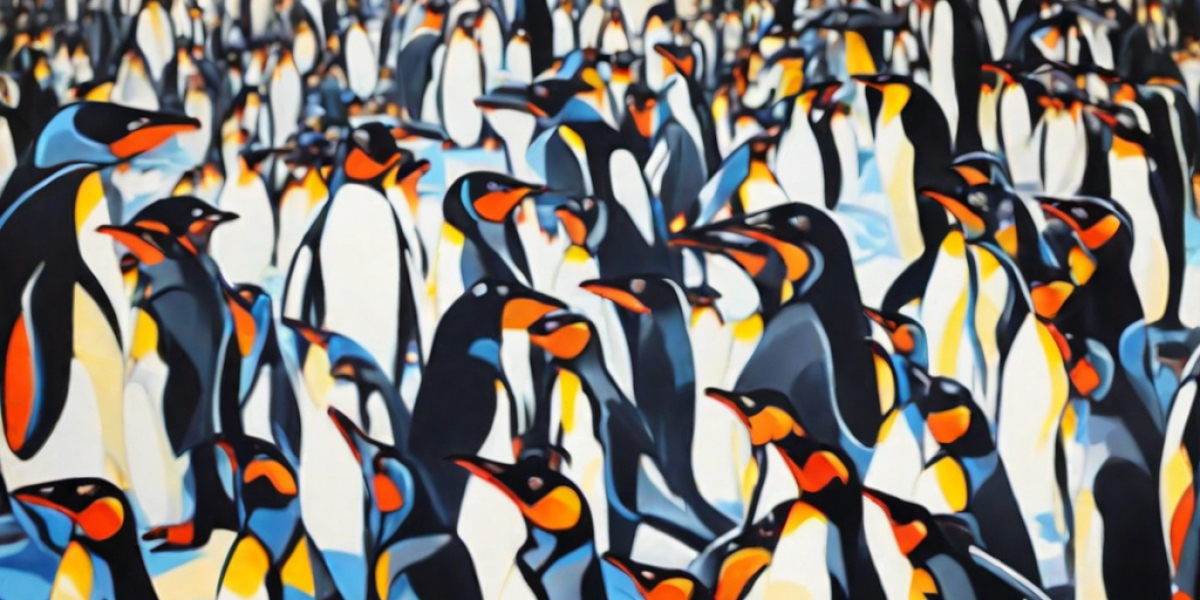# The Story of the Penguins
## Introduction
Penguins are fascinating creatures that have captivated the hearts of many people around the world. These flightless birds are known for their unique appearance, adorable waddling walk, and their ability to thrive in some of the coldest environments on Earth. In this article, we will explore the story of the penguins, their habitat, behavior, life cycle, and conservation efforts to protect these incredible birds.
## Habitat and Distribution
Penguins are found in the Southern Hemisphere, primarily in Antarctica, as well as in other regions such as South Africa, South America, and New Zealand. They inhabit a wide variety of environments, including icy coastlines, rocky shores, and even some warm-weather islands. Penguins have evolved to adapt to extreme cold and are well-suited for life in the harsh Antarctic climate.
## Physical Characteristics
Penguins are easily recognizable due to their distinctive appearance. They have a streamlined body shape, with short wings that have evolved into flippers for swimming. These flippers allow them to navigate through the water with incredible agility and speed. Penguins also have a layer of blubber that helps to insulate their bodies and keep them warm in frigid waters.
One of the most iconic features of penguins is their coloration. Most penguins have a black back and a white belly, which provides camouflage when swimming. This coloration helps to protect them from predators such as seals and orcas. Additionally, penguins have a unique pattern of spots or stripes on their chests that is unique to each individual, much like a human fingerprint.
## Behavior and Social Structure
Penguins are highly social animals and are known for their strong sense of community. They live in large colonies, ranging in size from a few hundred to several thousand individuals. These colonies provide safety in numbers and help to conserve body heat in the cold Antarctic environment.
Penguins engage in a variety of behaviors to ensure their survival. They are excellent swimmers and spend a significant amount of time in the water, hunting for fish, squid, and krill. Penguins are also known for their "porpoising" behavior, where they leap out of the water while swimming at high speeds. This allows them to breathe in fresh air and avoid predators.
During the breeding season, penguins form monogamous pairs and engage in elaborate courtship rituals. They use various displays, such as head-bobbing, calling, and bill-fencing, to attract a mate. Once a pair has bonded, they work together to build a nest, incubate their eggs, and raise their chicks.
## Life Cycle and Reproduction
The life cycle of a penguin begins with courtship and mating, which typically occurs during the breeding season. Once a pair has bonded, the female lays one or two eggs, which are then incubated by both parents. The incubation period can vary depending on the species but generally lasts between 30 to 60 days.
After hatching, the chicks are cared for by both parents. They are fed regurgitated food by their parents until they are old enough to venture out on their own. The parents take turns guarding the chicks and keeping them warm, as they are not yet able to regulate their body temperature effectively.
As the chicks grow, they form crèches, or groups, with other chicks for protection and socialization. They learn essential skills from their parents and gradually develop their swimming and hunting abilities. Once they are independent and capable of surviving on their own, the chicks will eventually leave the colony and start their own journey.
## Conservation and Threats
Penguins face numerous threats in their natural habitats, primarily due to climate change, overfishing, pollution, and habitat destruction. Climate change has a significant impact on penguins, as it leads to the loss of sea ice, which is crucial for their breeding and foraging activities. Changes in ocean currents and temperatures can also disrupt the availability of food, leading to decreased breeding success and population declines.
Overfishing is another major threat to penguins, as it reduces the availability of their primary food sources. Penguins rely on fish, squid, and krill for their survival, and the depletion of these resources can have severe consequences for their populations. Pollution, such as oil spills, can also have devastating effects on penguins and their habitats.
Conservation efforts are crucial to protect penguins and their habitats. Various organizations and governments are working to establish protected areas, implement sustainable fishing practices, and raise awareness about the importance of preserving these incredible birds and their ecosystems. Public support and education are key to ensuring the long-term survival of penguins for future generations.
## Conclusion
The story of the penguins is one of resilience, adaptability, and the importance of conservation. These remarkable birds have captured our imagination and inspired us with their unique behaviors and ability to thrive in extreme environments. As we continue to learn more about penguins and their habitats, it is our responsibility to protect them and ensure that they have a future in our rapidly changing world. Through conservation efforts and collective action, we can safeguard the habitats of penguins, mitigate the threats they face, and ensure that future generations have the opportunity to witness the beauty and wonder of these incredible birds. Let us come together to protect the story of the penguins and preserve the delicate balance of our planet's ecosystems.







